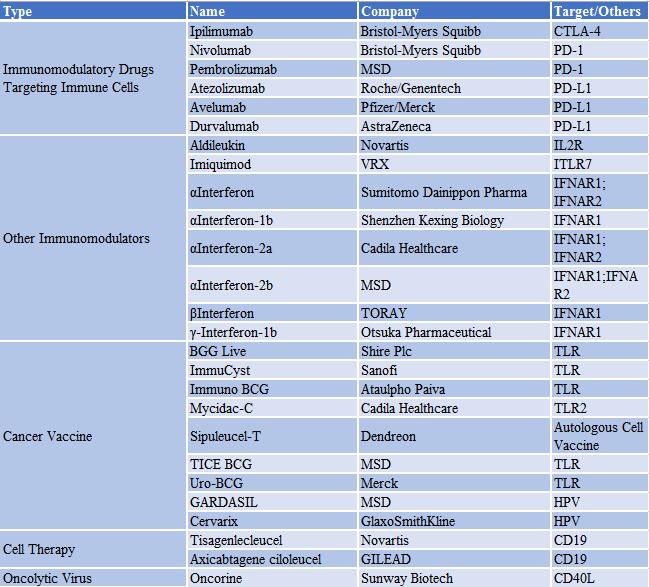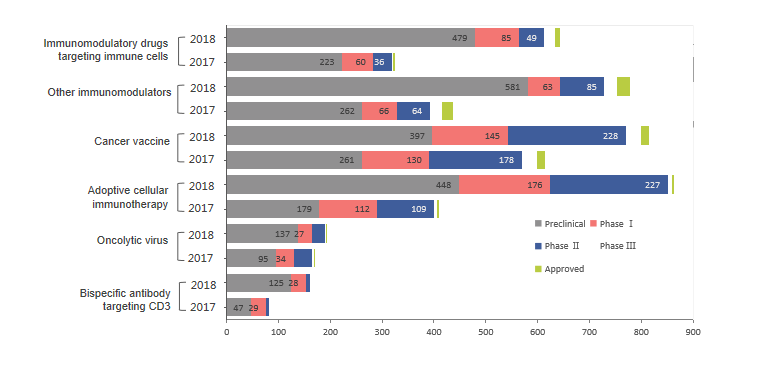Immuno-Oncology Therapy (I-O) refers to a therapy that kills tumor cells by activating the body’s immune system. According to their different mechanisms of action, immunotherapeutic drugs can be divided into six categories.

Figure 1 Classification of tumor immunotherapy
1. The global market for tumor immunotherapy has broken through $50 billion, expected to reach the level of $100 billion in the future.
As the most watched cancer treatment with positive effects, small side effects and prevention of recurrence, immunotherapy has revolutionized the standard and concept of cancer treatment, called the third revolution following traditional chemotherapy drugs and targeted therapy for cancer treatment. At present, tumor immunotherapy is still in its infancy but it is a sunrise industry. According to EvaluatePharma, the global market for cancer immunotherapy in 2016 reached $61.9 billion. With the increasing market demand, its market size is increasing. It is expected to grow to $120 billion by 2021. The compound annual growth rate will remain at More than 14%.
Figure 2 Global tumor immunotherapy market size ($’s in billions)
2.There are currently fewer varieties on the market. With the rapid development of tumor immunotherapy, the number of global tumor immunotherapy drugs will continue to grow.
Immunotherapy has been hailed as the most promising means for humans to overcome cancer. After 136 years of long research and development, especially in the past 10 years, PD-1 and CAR-T technologies have been transformed from scientific research results to clinical applications. As of September 2017, dozens of tumor immunotherapy products have been approved for marketing worldwide. In following Table 1, only part of approved products are listed, including six immunomodulatory drugs targeting immune cells, eight other immunomodulators, nine cancer vaccines, two adoptive cellular immunotherapy, two oncolytic viruses, and one bispecific antibody targeting CD3. During the period from September 2017 to September 2018, the number of drug development projects in the global cancer immunotherapy market surged 67% from 2031 to 3,394. Among them, adoptive cell therapy expanded the fastest, from 400 to 851, with an increase of about 113%. With the growing enthusiasm of academic institutions and industry, the development of tumor immunotherapy with great potential will continue to maintain rapid growth.
Table 1 Some of the tumor immunotherapy products that have been marketed globally
Figure 3 Number of projects in each segment of tumor immunotherapy



